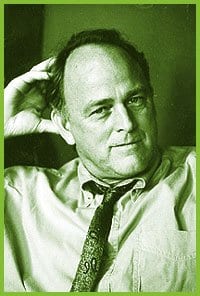As the Landcruiser curved along the roundabout and entered Tehran, there were coloured lights everywhere. Bright explosions of red and green and blue, like puffs of dandelions and pompoms of fireworks.
Multi-coloured swags illuminated the cliffs of high-rises.
Hundreds of twinkling lamps curled around the series of arches that soared high above the streets.
Against the pitch darkness of past midnight, they transformed it into a magical fabled city that the next day, in the harshness of sun, was like most legendary places – in reality a modern entity, overrun with roadways and beetling automobiles.
Inquiring about the lights that night, I was told it was a festival marking the birthday of the 12th Imam, who had disappeared as a child and who, it is believed, will come back on the day of resurrection.
As I sat there watching the play of wind-pushed lights in the blackness, I thought how man, through the centuries, has used light as a symbol of hope against the darkness, both metaphorically and physically. Shortly, it would be December. Christians and Jews would be celebrating their respective holidays. The menorah and the advent candle are beacons of both remembrance of the past and a celebration, as are the lights on a Christmas tree and decorating our homes and public spaces. Some things speak across cultures, across national and religious boundaries.
Just before leaving Canada, I had received an e-mail in response to a column I had written on marriage. In the e-mail, the author, Peter, lamented that gays and lesbians use wedding rings when they wed. The problem, he stated, is that the rings give the newlyweds the appearance of being straight. I must admit that when I see someone I suspect may be gay, I actually scan his or her left hand to see if there is a gold band, a sign of outward heterosexuality. But, slipping the band on the third finger of one’s partner is not just about conforming to straight symbols. Rather, it is that the ring has become synonymous with love representing the beginning and the ending fused in a complete circle. But are love and its link to marriage that simple or that (pardon the pun) straightforward?
It was in Iran, then called Persia, that a Zoroastrian myth was crafted which laid the foundation for the views of sex and love that became codified in the Jewish and Christian view, ones that continue to be expressed today, ones with which we still grapple. In the Persian telling, the lord of light and the demon of darkness fought one another. Symbolically, these two represented a duality that was inherent in human beings.
And so came the belief that our nature is corrupt and that sex is sinful, and should be denied. We should turn our backs on things that are debased about our nature and aspire to those that are pure and good. Along with this perspective arose the belief that sex’s purpose – hence, the sole goal of marriage – was procreation. Any other forms of sexual expression, whether within or outside of wedlock, were condemned.
Early Christian leaders took it one step further, stating that celibacy was the preferred state since Adam and Eve, in eating the apple, had tasted the forbidden fruit of carnal knowledge. To maintain control over sexual desire demonstrated that men specifically, since it was men whose penis carried the seed, could be noble and strong and free from the baseness of sex.
Love had little to do with marriage, which existed to ensure the furthering of dynasties and the production of, for the wealthy, male heirs. In the case of the working classes, it was the future source of labour. As it was paramount to ensure that children were truly the offspring of the fathers, it was crucial that marriage be monogamous.
As such, the wedded state seems to have been rather joyless. In fact, displays of passionate love were akin to being mad or ill. During the period of chivalry, when tales of courtly love became popular, ladies of the court were pursued in an idealized and chaste way. When the love became sexual, it ended in madness or in death. Passionate love became something to fear and distrust. To be masculine was to learn to control one’s passions and desires.
Subsequently with the rise of science, came a view that it was important to explore desire, to catalogue what was “normal” and what practices were “abnormal.” This led to a neat arranging of what would be acceptable and what would not be. Of course, it was found that heterosexuality was the “natural” choice. This tied in neatly with the rise of the middle class and the importance of home life and family values, even though men, the paragons of patriarchal virtue, hypocritically pursued fulfillment of their erotic fantasies in brothels and with rent boys.
In our own time, the belief that love is intrinsically linked to marriage is fed to us everywhere in the media, on television and in films. This link has become commercialized. We are inundated with images of beautiful people and symbolic language. Diamonds are forever, even though, in fact, they largely have little resale value.
It seems to me that perhaps the recognition of same-sex marriages is but the latest interpretation of how matrimony is perceived. Through the centuries, the definitions of love, sex and marriage have reflected the times in which they were articulated. But the consistent element underneath the terminology is the fundamental discomfort with sex, and particularly the idea that homosexuality refuses to be contained.

 Why you can trust Xtra
Why you can trust Xtra


